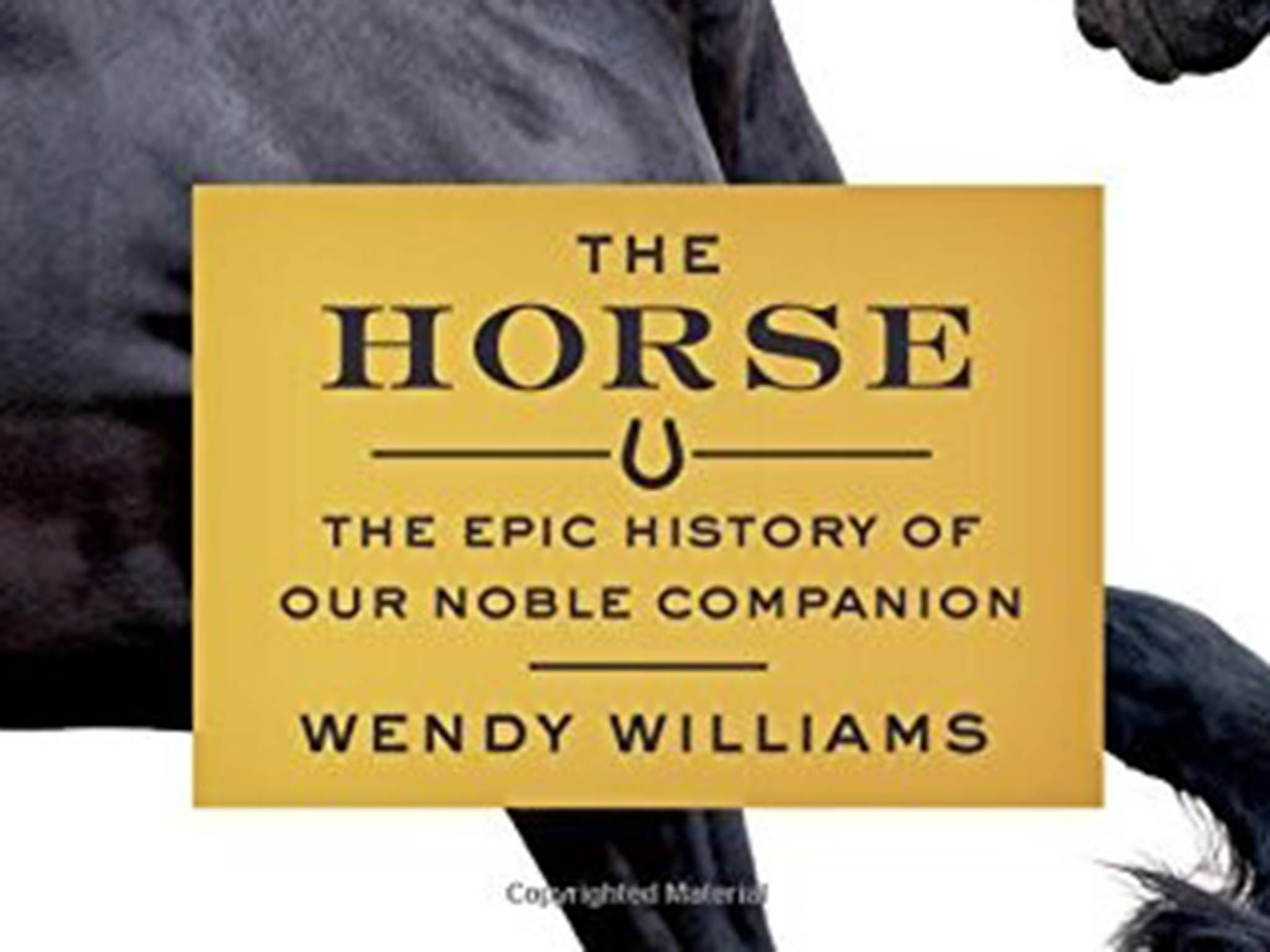Wendy Williams, The Horse: A Biography of our Noble Companion: Our four-legged (equine) friends, book review
Wendy Williams discovers that the modern horse is descended from 56-million-year-old ancestors with three toes

Your support helps us to tell the story
From reproductive rights to climate change to Big Tech, The Independent is on the ground when the story is developing. Whether it's investigating the financials of Elon Musk's pro-Trump PAC or producing our latest documentary, 'The A Word', which shines a light on the American women fighting for reproductive rights, we know how important it is to parse out the facts from the messaging.
At such a critical moment in US history, we need reporters on the ground. Your donation allows us to keep sending journalists to speak to both sides of the story.
The Independent is trusted by Americans across the entire political spectrum. And unlike many other quality news outlets, we choose not to lock Americans out of our reporting and analysis with paywalls. We believe quality journalism should be available to everyone, paid for by those who can afford it.
Your support makes all the difference.In her engaging, comprehensive study of equine evolution, the science journalist Wendy Williams combines a love of horses with a keen interest in natural history. Fossils and cave drawings demonstrate that an emotional bond between horses and humans existed long ago. Williams suggests that the domestication of horses “became the foundation on which human civilisation was built”. For horses allowed our ancestors to traverse vast stretches of land more swiftly than they could on foot.
Travelling across continents to talk to equine ethologists, palaeontologists, animal behaviourists and fellow horse-lovers, Williams discovers that the modern horse is descended from 56-million-year-old ancestors, “dawn horses” with three toes. Fossils suggest that they resembled dogs. With regard to Darwin’s theory of evolution, Williams claims that these tiny animals became bigger and faster over time not as a form of progress but “because the world around them changed.
Tectonic plates collided. Ocean currents shifted. Mountains rose. Mountains eroded. The world became hot. The world became cold.”
Williams is fascinated by the evolutionary resilience of horses. Why did they develop only one toe – four hooves? This increased their speed, enabling them to escape predators but, more importantly, Williams believes, it allowed them to travel further in search of fresh fodder once the planet warmed and grass plains began to flourish.
A horse’s teeth are just as important for providing crucial information about their adaptability. Fossils and tooth fragments show us the changes in their diet and lifestyle. As their teeth got larger, reflecting their increased grass consumption, the position of their eyes also changed, moving closer to the ears.
Interspersed with the research are Williams’s musings on her own horses: Whisper, who learns to open his stable door with his lips and turn on the water tap with his hoof; and her trusty workhorse, Gray, who, one day, sees a monster instead of a pony and buggy and bolts. She debunks a few myths along the way – it is the mares, rather than the stallions, who make the major decisions in the small bands of horses that continue to roam freely on this planet – and offers gems of trivia that support the evolutionary science. Why do France’s Camargue horses have grey coats? Because lighter hair protects them from the horseflies that proliferate in the hot humid region they inhabit.
It is such delightful snippets of information that ensure The Horse, a historical and “scientific travelogue”, is such an accessible read and a gift for horse lovers.
The Horse: A Biography of our Noble Companion, by Wendy Williams. Oneworld £20
Join our commenting forum
Join thought-provoking conversations, follow other Independent readers and see their replies
Comments